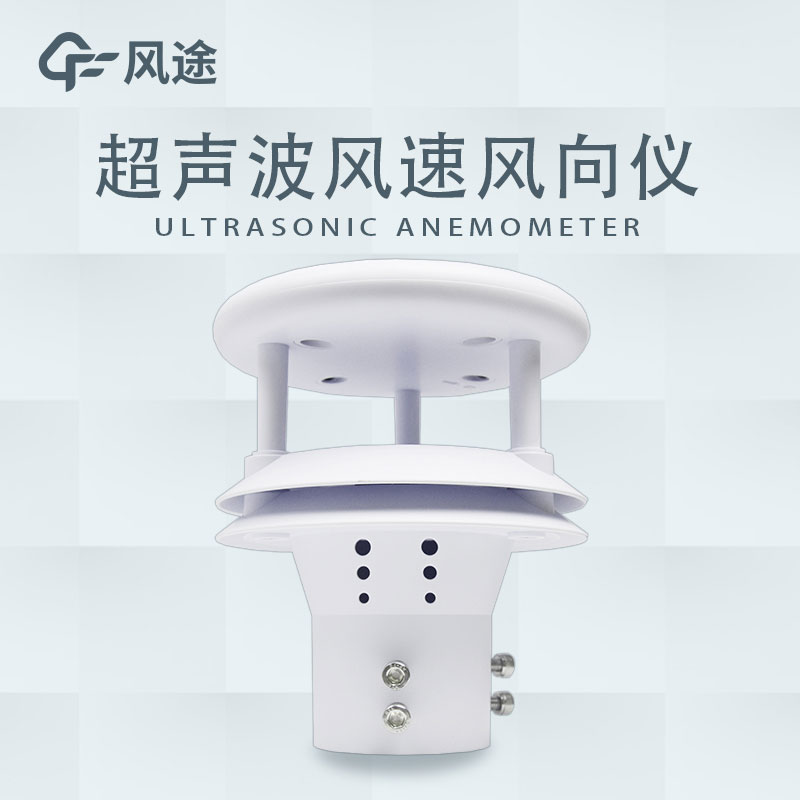Shandong Fengtu IOT Technology Co., Ltd
Sales Manager:Ms. Emily Wang
Cel,Whatsapp,Wechat:+86 15898932201
Email:info@fengtutec.com
Add:No. 155 Optoelectronic Industry Accelerator, Gaoxin District, Weifang, Shandong, China

Sales Manager:Ms. Emily Wang
Cel,Whatsapp,Wechat:+86 15898932201
Email:info@fengtutec.com
Add:No. 155 Optoelectronic Industry Accelerator, Gaoxin District, Weifang, Shandong, China
time:2023-08-17 17:24:46 source:Weather Station viewed:875 time
Ultrasonic measurement of wind speed and direction:
Ultrasonic measurement of wind speed and direction is a technology without moving parts and without calibration. The principle is that the ultrasonic wave propagation speed in the air is related to the average wind speed in the air, when the ultrasonic wave propagates in the wind, it will be affected by the wind speed and produce frequency change, by measuring the frequency change of ultrasonic wave, you can calculate the average wind speed and wind direction in the air.
Specifically, an ultrasonic anemometer consists of a transmitter and a receiver. The transmitter transmits ultrasonic signals into the air, and the receiver receives the return signals and calculates the frequency difference of the signals. Due to the wind, ultrasonic waves are affected by the Doppler effect as they propagate through the air, resulting in a change in the frequency of the return signal. By measuring the frequency difference of the echo signal, the average wind speed and direction in the air can be calculated.
Compared to traditional mechanical wind speed and direction instruments, ultrasonic measurement of wind speed and direction offers higher accuracy, faster response time and longer service life. At the same time, ultrasonic anemometers are smaller in size and weight due to the elimination of mechanical components, making them easier to carry and install.
Ultrasonic measurement of wind speed and direction has the following advantages over traditional wind speed and direction measurement:
1. No moving parts: traditional mechanical wind speed and direction measurements require mechanical and other moving parts, which can easily lead to a decline in measurement accuracy or failure due to friction, wear and tear, etc., while ultrasonic measurements have no moving parts, there is no such problem.
2. High precision: ultrasonic wind speed and direction measurement technology can achieve high precision and high resolution measurement, the accuracy can reach 0.1 m / s, the measurement error can be controlled within 1 degree.
3. Simple installation: ultrasonic measurement of wind speed and wind direction of the equipment is simple to install, does not require complex mechanical bracket or fixture, only need to place the equipment in the wind area to be measured.
4. Strong anti-interference performance: ultrasonic measurement of wind speed and wind direction is not affected by electromagnetic interference and environmental noise, has a strong anti-interference ability.
5. Long life: ultrasonic measurement equipment generally have a long service life, can reach many years or even more than ten years, low maintenance costs.
6. No maintenance: Because there are no moving parts and mechanical supports, ultrasonic wind speed and direction measurement equipment requires no maintenance, reducing maintenance costs and time.

Four Component Radiation Meter, also known as Net Total Radiation Meter or Net Radiation Meter, is a device specially designed to measure and record the shortwave, longwave, net and atmospheric radiation from the sun. It uses advanced sensing technology and precision measurement standards to accurat...
Micro weather stations have always been a good weather observation tool in the field of meteorology. This kind of weather station generally includes all kinds of sensors, data collectors and data processing units, which can monitor temperature, humidity, air pressure, wind speed, wind direction and...
In recent years in the field of agriculture, the agricultural Internet of Things is mentioned very often, as we all know, the agricultural Internet of Things technology on the rapid development of the sudden agricultural help, but in the end how the integration of agriculture and Internet of Things...
The monitoring of surface water quality in rivers, lakes, and other water bodies is of great significance. The emergence of the Micro Water Quality Monitor has provided an efficient and convenient solution for realizing fully automatic monitoring of surface water. Taking the FT-WMSM model as an exam...